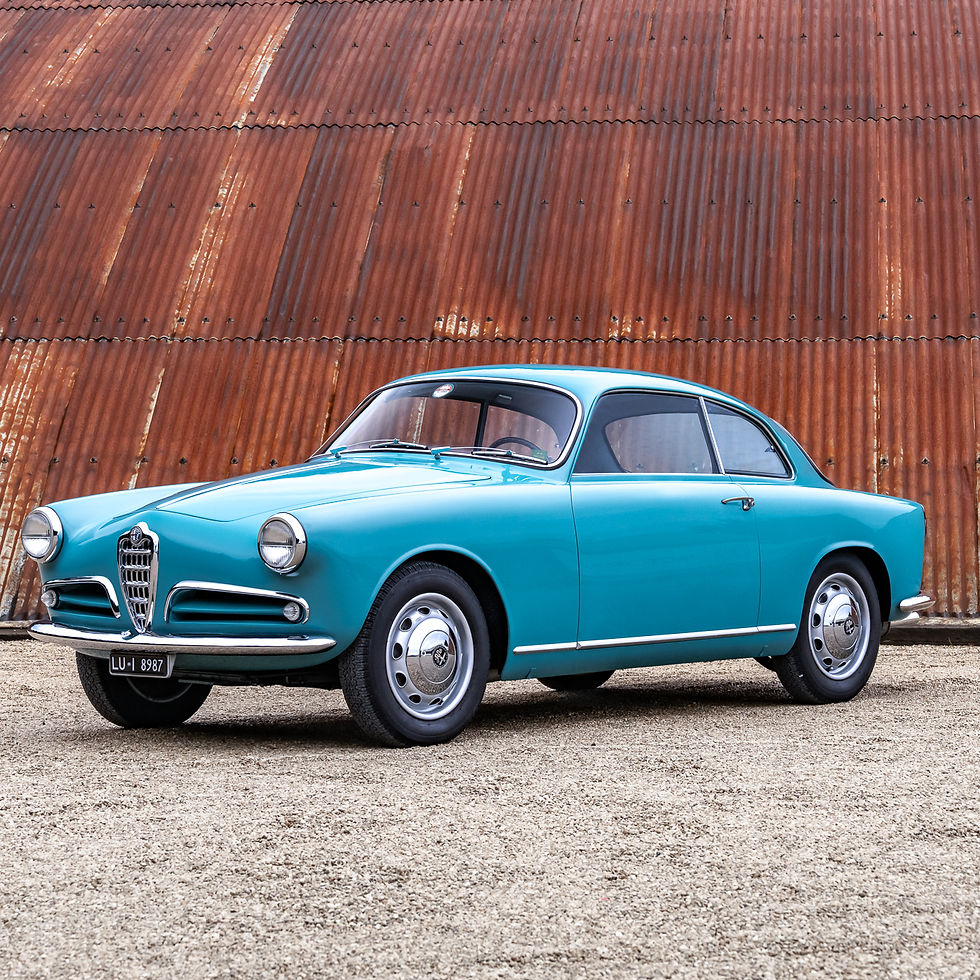David Brown resigned himself to the chronic defeats of his cars in races against an overwhelming Italian competition. As a result, the production has, since the DB5, been clearly oriented towards Grand Tourism. The secret agent 007 takes care of the promotion of the car by moving it from casino to casino, while the circuits are empty of their Aston Martins. Here is a nice surprise during the 1965 London Motor Show with the presentation of the new Aston-Martin DB6.
Hard to succeed the mythical DB5?
Finally, after having rejected proposals from the Touring coachbuilder, David Brown wanted the internal team to take charge of developing the design that has made the firm successful since the DB4. And since we're dealing with a new model, it's an opportunity to correct certain criticisms and widen the circle of fans and clients. The in-house designers had to come up with a solution to provide not only more aerodynamic support at high speed, but also more room to give in to the temptation of the 2+2 concept. The wheelbase is thus lengthened by 9.5 cm for better stability. As for the rest, the front end has a strong family resemblance with the wide front grille, the covered headlights and the air intake on the hood to bring fresh air to the engine. The stern is new with a coupe-like concept and a spoiler. From the side, the new proportions seem more obvious, even if Newport Pagnell remains faithful to the stylistic tics of the previous generations: chrome is very present, air intakes in the front fenders like gills and wheels with spokes and Rudge hubs. The Aston-Martin DB6 Vantage is no different from its more "modest" siblings, since it's under the hood that everything happens...
When an Aston-Martin is named "Vantage", the informed enthusiast knows that the engine is the most powerful in the range.
The Aston-Martin DB6 Vantage is no exception...
The Aston inline six is a prime piece of equipment, always placed in the front longitudinal position. The work of Polish-born engineer Tadek Marek, it boasts a displacement of 3,995 cm3 and a high level of technical refinement that its transalpine rivals can envy. Made entirely of light alloy, this engine has super-square dimensions with a bore of 96 mm and a stroke of 92 mm. Its chrome molybdenum steel crankshaft rotates on seven bearings and benefits in this Vantage variant from static and dynamic balancing as well as the rest of the mobile equipment. The top engine is topped by a double overhead camshaft cylinder head and two valves per cylinder inclined at 80°. The whole unit is driven by a double chain. To increase the engine's power from 282 hp to 325 hp at 5,750 rpm, Tadek Marek used three Weber 45 DCO double-barrel horizontal carburetors (instead of the SU carburetors of the standard version). Torque also increases to 393 Nm at 4,500 rpm. The transmission is provided by a ZF manual gearbox with 5 gears, all synchronized, completed by a self-locking differential on the rear axle to guarantee maximum traction and mobility at the stern. Note that the fourth gear is direct drive, while the fifth gear is overdrive. If the Touring Superleggera technique has been taken over, it is however reviewed and adapted by Aston-Martin, the DB6 thus marking its difference with the DB4 and DB5. It is now on a platform chassis that is fixed the body panels all in aluminum around a structure of small tubes. The front axle is composed of independent wheels with superposed triangles and anti-roll bar. The rear is more conservative with a rigid axle guided by struts and laterally by Watt's parallelograms. Among the new features, we will appreciate the rear shock absorbers that allow four different settings to favor either road holding or occupant comfort. A coherent technical choice that clearly indicates Aston-Martin's Grand Touring strategy rather than pure sport, even for this Vantage variant. The rack-and-pinion steering is unassisted, which is noticeable when maneuvering at low speeds. Braking is done by four full Girling discs assisted by two brake servos. The spoke wheels with Rudge hubs are shod with 6.75×15 tires (Avon brand ex-factory). Despite the Superleggera technology, the Aston-Martin DB6 Vantage weighs a substantial 1.6 tons.
On the road, the Aston-Martin DB6 Vantage confirms its ease of handling on long curves and its reassuring stability at high speeds. But as soon as the road gets tighter, and the curves sharper, the Aston-Martin DB6 Vantage has to confine itself to a role in which it excels: the luxury Grand Touring. In fact, once the door is opened, we find with happiness the luxurious and tasteful presentation of Newport Pagnell. Black dashboard, battery of Smiths counters, complete and luxurious standard equipment, without being innovative, and especially the rear seats which are unprecedented at Aston-Martin and which allow to take children on a trip, especially since the trunk is also more consequent. For adults, the reduced headroom of the rear seats is very acceptable, as we still remember this Paris - Goodwood a few years ago.
Aston-Martin gives its DB6 more tone in the form of this Vantage. It does not deviate from the traditions of discretion and elegance, and it is impossible to distinguish an Aston-Martin DB6 Vantage from a standard version on the outside. At the wheel, on the other hand, the revival of the inline 6 is very clear with a racier character, despite a discreet sound. The rear seats are well digested aesthetically with a line, admittedly thicker and less racy, but still as attractive and which does not neglect the practical aspects. The Aston-Martin DB6 Vantage can count on an unexpected but welcome versatility in a market segment that often favors hedonistic pleasure. The Grand Touring spirit is now a family affair. This is good news for fathers. The DB6 is much more than a simple evolution of the DB5. It remains the last link in a long lineage that started in 1958...


































































